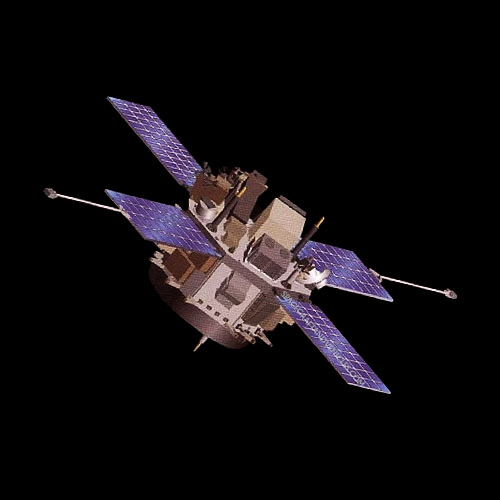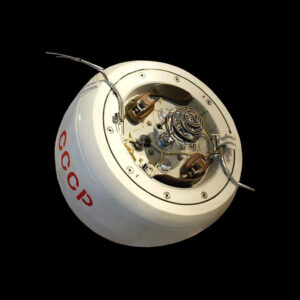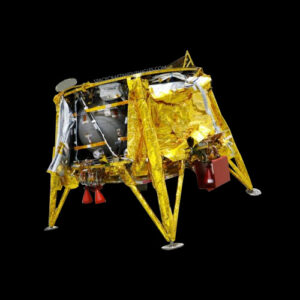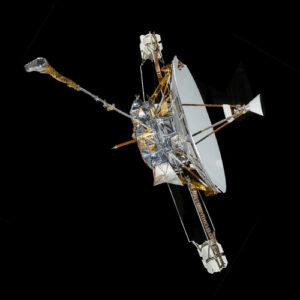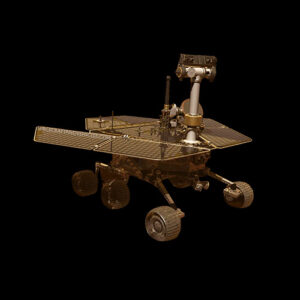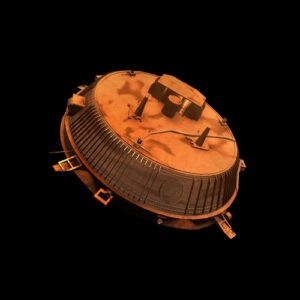Launched on August 25, 1997, the Advanced Composition Explorer (ACE) is a NASA spacecraft tasked with studying the composition and dynamics of solar and interstellar particles. ACE’s primary mission is to provide comprehensive measurements of energetic particles from the Sun, interplanetary medium, and galactic sources, contributing to our understanding of solar and cosmic phenomena. Operating at the L1 Lagrange point, ACE serves as a sentinel monitoring space weather conditions and providing early warnings of solar storms that could impact Earth’s technology and infrastructure.
Design and Construction
ACE was meticulously designed and constructed to withstand the harsh conditions of space while conducting precise measurements of energetic particles. The spacecraft features a compact and robust structure housing scientific instruments and communication systems within its cylindrical body. Equipped with solar panels for power generation and scientific instruments for particle detection, ACE is capable of monitoring a wide range of energetic particles with high sensitivity and accuracy.
Constructed from durable materials such as aluminum and titanium, ACE’s design emphasizes reliability, longevity, and scientific capability. Its instruments are optimized to detect particles across a broad energy spectrum, allowing for comprehensive studies of space weather phenomena and cosmic radiation.
Mission Objectives
- The primary objective of ACE is to monitor and analyze energetic particles originating from the Sun, interplanetary medium, and galactic sources.
- Secondary objectives include studying solar wind properties, interstellar dust, and cosmic ray modulation in the heliosphere.
Launch and Deployment
- ACE was launched aboard a Delta II rocket from Cape Canaveral Air Force Station in Florida.
- After reaching its designated orbit around the L1 Lagrange point, ACE deployed its instruments and commenced its mission to study space weather.
Technical Specifications
- Dimensions: ACE has a cylindrical body approximately 1.9 meters in length and 1.5 meters in diameter, with a total mass of approximately 774 kilograms.
- Power Source: The spacecraft is powered by solar panels, which convert sunlight into electricity to operate onboard systems and scientific instruments.
- Instruments: ACE carries a suite of scientific instruments, including particle detectors, magnetometers, and spectrometers, for studying energetic particles and magnetic fields in space.
Current Status
As of 2024, ACE continues to operate nominally, providing critical data on space weather conditions and cosmic radiation levels. Its observations have led to numerous scientific discoveries and advancements in our understanding of solar and cosmic phenomena.
ACE’s real-time monitoring capabilities have proven invaluable for space weather forecasting, helping to protect satellites, astronauts, and technological infrastructure from the effects of solar storms. Its comprehensive measurements of energetic particles contribute to ongoing research efforts in heliophysics, astrophysics, and planetary science.
The longevity of ACE’s mission underscores its importance as a cornerstone of space weather monitoring and research. By continuously monitoring the dynamic environment of space, ACE enables scientists to better understand the processes driving solar activity and its impact on Earth and the solar system.
